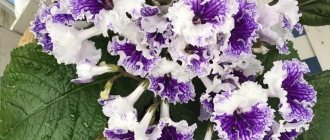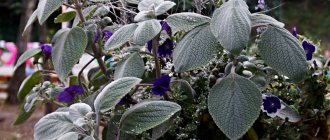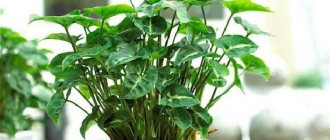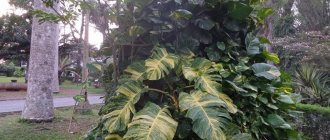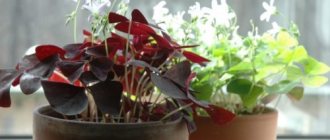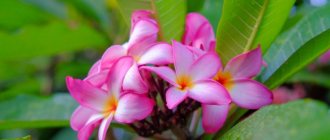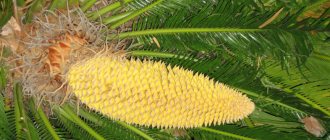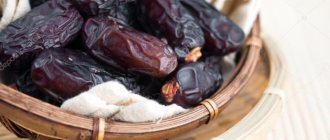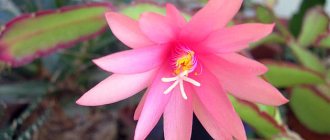Photo of Livistona palm tree – a perennial palm tree, part of the Arekov family, has up to 30 species. Homeland of the Liviston palm: China, Taiwan, Japan.
Decorative deciduous tree with a bare woody stem, height from 50 cm to 2 m. It has large glossy green fan leaves of a rounded configuration with a lobed dissection. They are attached to brown spiky petioles.
It is grown at home, but practically does not bloom. The degree of growth intensity is average. Life expectancy is more than 10 years.
Be sure to check out the similar palms Washingtonia and Trachycarpus Fortune.
| The degree of growth intensity is average. |
| Indoor Livistona does not bloom. |
| The palm tree is easy to grow. |
| Perennial. |
Features of growing at home. Briefly
| Temperature | In the warm season - 21-25 °C, in autumn - gradually reduced, in winter - for subtropical species not lower than 5, not higher than 10 °C and for tropical species - 17-20 °C. |
| Air humidity | High. All varieties require systematic spraying in the summer season. |
| Lighting | Intensely diffuse. Dark-leaved representatives grow well in shade. |
| Watering | In the spring-autumn period, it is moistened as the surface soil layer dries, in winter it is reduced to a minimum, so as not to create a dry crust on top. |
| Priming | Loose, enriched and moisture permeable. |
| Feeding and fertilizer | From spring to autumn, complex mineral compositions are applied once every 7 days; in winter, once a month is enough. |
| Transfer | In early spring. Young specimens - every year, adults - once every 3 years (according to the degree of filling of the pot with the root ball). |
| Reproduction | Seed, cuttings and division of rhizomes. |
| Features of cultivation | Cultivated as a decorative deciduous representative. It goes dormant from late autumn until spring. Livistona does not bloom at home. In summer, take it out into the fresh air. Regular spraying and wiping of leaf plates is required. |
Be sure to check out similar plants:
| Hamerops - cultivation and care |
| Washingtonia |
| Yucca home - planting and care |
Where to put
— Lighting for Livistonia chinensis should be sufficient. It should be in a well-lit area, but should not be placed in a place exposed to strong sunlight. The best results are obtained with diffused light (place the plant next to an east-facing window).
— Temperature Livistonia is a plant that easily adapts to room temperature conditions; in winter it tolerates a temperature drop of up to seven degrees.
— Air humidity can be maintained by periodic spraying or using a humidifier. You can also place the pot on a tray with expanded clay or pebbles, which will be filled with water. This will humidify the air around the plant.
Caring for Livistona at home. Details
Caring for Livistona indoors is not particularly difficult. The palm is unpretentious and grows well even with minimal care. Homemade Livistona, like wild-growing ones, prefers a lot of light and warmth and does not tolerate drafts.
Bloom
The palm tree does not bloom at home .
Therefore, it is grown mainly for the decorative qualities of its foliage - feathery, large-scale in size, rich green in color.
Temperature
The palm tree, due to its tropical origin, is predisposed to high-temperature conditions. In summer, it is enough to maintain the environment within 22-25 °C, in winter it is lowered to 15-16 °C.
A sharp short-term jump to 10 °C will not be harmful.
Spraying
Homemade liviston needs high humidity, so on hot days it should be sprayed regularly. Additionally, you can wipe the leaf plates with a damp cloth, as the plant actively collects dust.
In winter it is necessary to spray, but much less often. An exception is if the palm tree is located near heating devices. To maintain a stable required air humidity, install a humidifier in the room.
Lighting
Liviston feels most comfortable at home on the south side, where there is enough sunlight. It is advisable to create light shading from the midday heat . The formation of the crown will be uniform if you systematically rotate the pot with the plant around its own axis so that the light flux hits all sides equally. In the summer, it is better to move the palm tree to the garden or to the balcony, but where there is no through wind blowing.
Watering
Water regularly in summer, but without creating swamps .
Although the palm tree is moisture-loving, being in damp conditions leads to rotting of the root system. The main thing is that the soil is constantly slightly moist. In winter, the intensity of watering is reduced, but so that the palm tree does not suffer from drought. For irrigation, take warm and pre-settled water. After 2 hours, be sure to drain the water accumulated in the pan.
Pot
The container for Liviston is chosen to be spacious and deep, since the roots tend to grow strongly. It is also not recommended to take pots that are too large, otherwise the plant will devote all its energy to the development of the rhizome and will slow down in growth. There must be drainage holes at the bottom.
Priming
You can buy ready-made soil mixture (for palm trees) at a gardening store or mix it yourself: garden turf soil, raw peat (humus) and coarse river sand. All components are taken in a ratio of 3:1:1.
Feeding and fertilizer
The most active growth of the palm tree is observed from April to November, which is associated with a high consumption of nutritional resources. At this time, feeding with balanced mineral and vitamin compounds will be required. Special fertilizers are suitable for palm representatives. They are paid three times a month. Excess can cause plant disease.
Liviston transplant
After purchasing a palm tree, replanting will be required, but not immediately. Wait 2-3 weeks until the plant adapts to new conditions.
Then it will not suffer so much from relocation to another place of residence. Main landing activities:
- Prepare the substrate and pot.
- A drainage layer at least 3 cm thick is laid on the bottom. Suitable drainage options include: expanded clay, broken clay shards, small stones. Fertile soil is poured on top.
- To make it easier to remove from the old pot, water it generously and leave to soak for several hours.
- They grab the root ball along with the soil and transplant it to a new location.
- The free space is filled with substrate, leaving the root collar slightly open.
A home palm tree needs to be replanted every 2-3 years, when the roots become crowded and they stick out. It is enough to relocate old representatives once every five years, and the rest of the time to replace part of the surface layer of the earth. Excess root shoots are trimmed so that the palm tree fits comfortably in the new container.
Do I need to prune my Liviston palm tree?
In case of unreasonable drying of the leaf component, it is necessary to cut off the apical part of the palm plates, but not the entire leaves. Otherwise, a chain reaction starts and adjacent sheets begin to dry quickly. Remove the entire leaf if it is not viable.
The dormant period for the Livistona palm begins at the end of October and continues until early spring. If you need to go on vacation, it is recommended to install an automatic watering system for this period. Thus, the plant will not need moisture for the next 3-4 weeks, since the volume of the device’s reservoir is quite spacious.
Palm tree transplant
Like most palm trees, the Chinese fan tree reacts quite painfully to replanting, so this procedure should be performed only in cases of extreme necessity - when the roots of the plant have grown so large that they begin to crawl out of the pot.
The optimal soil composition for replanting palm trees (in approximately the same proportions): light clay-turf soil; humus-leaf soil; peat; rotted manure and charcoal. For better drainage, you can add a little river sand to the soil.
Growing Livistona from seeds
Of all the methods of propagation, livistons are considered the simplest and most productive by seed. The procedure is carried out in the time interval from February to March.
Sequencing:
- The seed material is pre-soaked in water for 2 days.
- Plant one seed per pot to a depth of at least 1 cm.
- The soil must first be warmed up.
- Cover the seedlings with film or glass to create a greenhouse effect. Place in a sunny place and wait for the first shoots.
Care involves regular moistening by surface spraying from a spray bottle or through a tray and ventilation. With the appearance of strong shoots, the cover is removed.
Diseases and pests
False Liviston palm is susceptible to a number of diseases, which are manifested by the following symptoms:
- Liviston leaves turn yellow - a consequence of insufficient watering;
- brown tips of leaves - excessively dry air in the living space;
- leaves wither - lack of moisture and too dry soil;
- Leaves wither and darken - low temperature;
- grows slowly - lack of fertilizers;
- the lower leaves darken and die - this is a normal phenomenon inherent in old plants.
The most dangerous parasites are:
- scale insect;
- spider mite;
- mealybug;
- whitefly butterfly.
Flower design
Livistonia sinensis can grow in large pots and tubs on the terrace or in a bright place in the room. This fan palm looks no less attractive in a well-lit place. Livistonia chinensis is also popularly called Livistona palm. The Livistona or Livistona Chinese palm tree is also represented by other species. Therefore, if the Livistona palm has become your favorite, then Livistona chinensis is represented by other species, such as Livistona rotundifolia and Livistona rotundifolia. Good luck to you.
Types of Livistona domestica with photos and names
Livistona chinensis (Livistona chinensis)
The palm tree is native to Southern China. It has a thick trunk with a circumference of up to half a meter and is more than 10 m tall. At the base it is lumpy, on top the surface is fibrous with healed residual foliage. The leaf blades are large, drooping, fan-shaped, cut to half the total length into voluminous lobes 60-70 cm in size, which are pointed at the tips.
The leaves are attached to long meter-long petioles 8-10 cm thick, which are covered to the middle with small spines, pressed into the leaf tissue. Inflorescences are of axillary type. The plant prefers a moderately humid and warm climate. It grows quite intensively, so already at the age of three it stands out for its high decorative properties. The development of young leaves occurs provided that the integrity of the apices is maintained.
Southern Livistona (Livistona australis, Corypha australis)
The wild palm is native to the subtropical moist woodlands of Eastern Australia, extending as far as the southern tip of Melbourne. The trunk is columnar, more than 20 m tall, with a diameter of 35 centimeters or more. In the lower part it is significantly expanded and strewn with ring-shaped growths. The crown consists of fan-shaped large segmented two-meter leaves of a rich emerald color.
The petioles are narrow and strong, almost two meters long, completely covered with brown spines. Axillary inflorescences of a branched type. The best growth of this variety of Livistona is observed in partial shade. Ideal for home cultivation.
Livistona rotundifolia
The distribution area of this type of palm is the sandy regions of the island of Java and the Molluk Islands. The height of the plant is about 15 m, the diameter of the trunk is 15-18 cm. The leaf blades are dissected, rounded, about 1.5 m in diameter. The surface is shiny, dark green in color.
The foliage is attached to elongated petioles, covered a third of the length with multiple spines, and extend from them in different directions, forming a circle. It is recommended to grow this palm tree in areas with moderate climatic conditions.
3.Varieties:
3.1. Livistona rotundifolia
An elegant, fan palm with a thin, erect brown trunk bearing remnants of old, dead leaves. In their natural habitat, the plants reach a height of 25 m. The leaves are fan-shaped, on long, spiny petioles, reaching a diameter of 1.5 meters. Each leaf consists of many dark green, glossy, linear segments. In nature, plants form branched, drooping inflorescences up to 2 m long. Each inflorescence bears many small, yellow flowers, which over time turn into round berries. When grown indoors, flowering occurs extremely rarely.
↑ Up,
